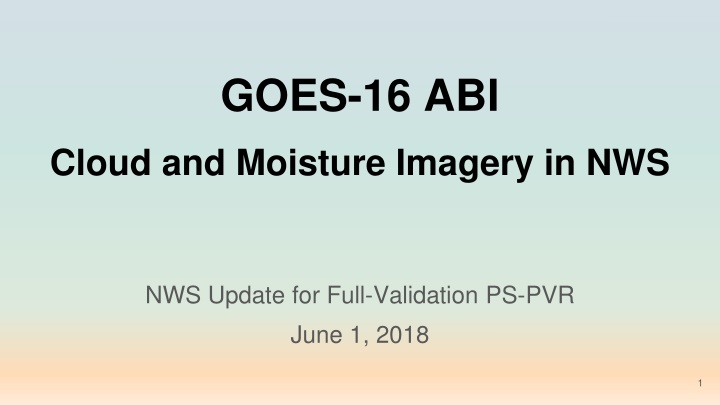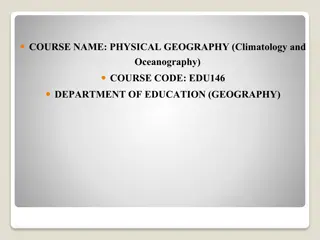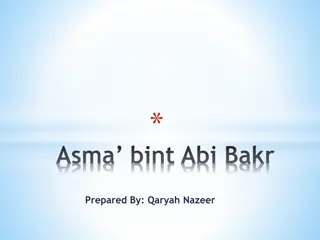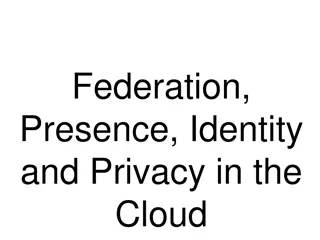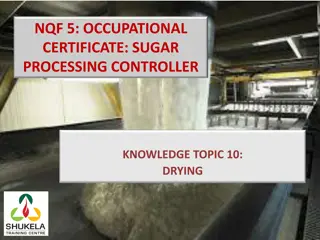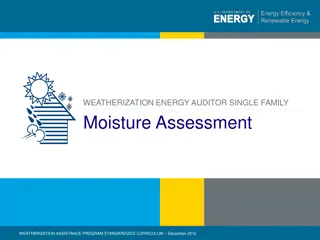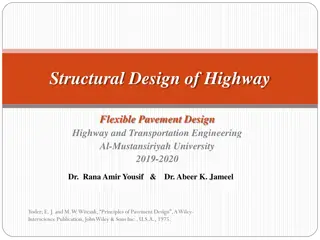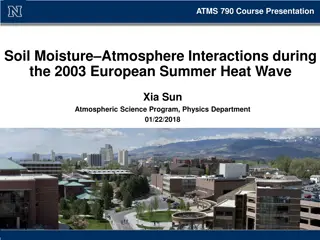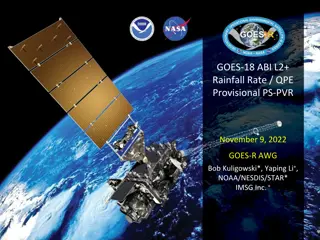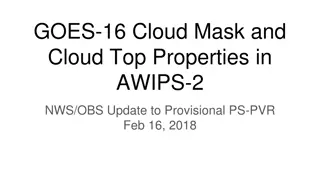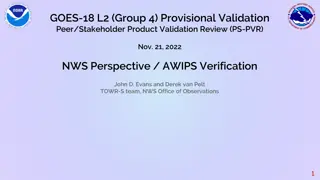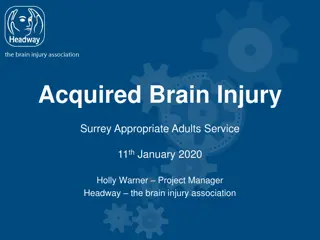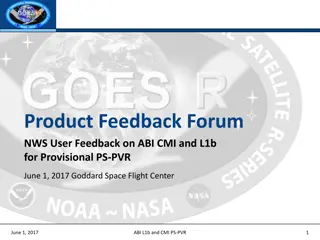GOES-16 ABI Cloud and Moisture Imagery Updates in NWS
Visualize the evolution of GOES-16 ABI imagery processing in NWS, including cloud and moisture imagery updates, AWIPS-2 visualization enhancements, and exploitation tools for mesoscale data. Collaborative efforts have resulted in improved tools for forecasting offices and enhanced meso-utilization processes within the NWS operations. Explore the advancements in satellite image rendering, menu structures, and RPM updates for accurate weather forecasting.
Uploaded on Sep 19, 2024 | 0 Views
Download Presentation

Please find below an Image/Link to download the presentation.
The content on the website is provided AS IS for your information and personal use only. It may not be sold, licensed, or shared on other websites without obtaining consent from the author.If you encounter any issues during the download, it is possible that the publisher has removed the file from their server.
You are allowed to download the files provided on this website for personal or commercial use, subject to the condition that they are used lawfully. All files are the property of their respective owners.
The content on the website is provided AS IS for your information and personal use only. It may not be sold, licensed, or shared on other websites without obtaining consent from the author.
E N D
Presentation Transcript
GOES-16 ABI Cloud and Moisture Imagery in NWS NWS Update for Full-Validation PS-PVR June 1, 2018 1
GOES-16 Cloud and Moisture Imagery in AWIPS-2 and N-AWIPS Fielded AWIPS-2 baseline handles ingest/decode/store/display/purge of ABI Imagery All ABI channels, all sectors (AWIPS derives RGBs and channel differences) WFOs/RFCs/RHQs receive SCMI for AWIPS-2 via SBN (since March 2, 2017) Examples are shown in the following slides (AWIPS-2/CAVE screenshots) Fielded N-AWIPS baseline handles ingest and display of ABI Imagery All channels, all sectors Projected McIDAS Area files NCEP Centers receive CMI (for AWIPS and N-AWIPS) via GRB, with SBN as backup (since March 1, 2017) Backup slides summarize current NWS ABI product posture 2
AWIPS-2 Visualization and Exploitation 16+ months of evolutionary improvements of GOES-16 ABI processing and rendering in NWS Satellite Enhancement Team (SET) review and approval process Collaborative activity among NWS regional/field reps, cooperative institutes, NWS HQ (OBS/TOWR-S Team) and GOES-R Program Office Defined menu structures, enhancement tables, RGB and difference definitions Orderly deployment of 15 RPM updates to regional and national forecast offices OBS/TOWR-S team coordinates and executes agile RPM process which accelerates changes into AWIPS (with baseline incorporation once functionality stabilizes) AWIPS/N-AWIPS refinements and training continue 3
Exploitation of GOES-16 ABI Mesos in NWS Initial process and tool for meso exploitation developed prior to GOES-16 T2O Meso Domain Scheduler (MDS, also known as Meso Mission Manager, MMM) encourages and facilitates meso collaboration and utilization Standard Operating Procedure documents mission priorities and the NESDIS/NWS meso- request process NWS Governance of ABI/Meso process successfully transitioned to NWS Operations Division (Spring 2018) MDS/MMM tool and process supported by OBS/TOWR-S team Process evolution continues 4
Noteworthy Items (1 of 2) 1. SCMI projected 3.9 m (band 7) Imagery: Cold Pixels appear next to very hot pixels (NWS OTE TTR 36) 2. Streaky lines ( striping ) (NWS OTE TTR 18). NESDIS is aware and working. 3. Received numerous requests to extend the Northern ECONUS farther northward Relocation from 89.5 deg. to 75.2 deg provided better coverage just north of CONUS 4. Projected imagery is sometimes degraded (shows significant pixelation) in basin- wide views, but disappears upon zoom-in, and warrants further investigation NWS internal issue, will be worked within AWIPS 9
Air Mass RGB (May 2018 Fixed Grid Sample) Example of striping shown in Air Mass RGB, based upon fixed grid sample tiles 10
Noteworthy Items (2 of 2) 4. Checkerboard display occurs in AWIPS for (non-Full Disk) channel differences and RGBs utilizing bands of differing spatial resolution RGBs impacted Day Convection (see next slide) CIMSS Natural Color Channel Differences impacted Split Fire (2.2-1.6 m) Split Snow (1.6-0.64 m) Split Vegetation (0.64-0.87 m) 11
Day Convection RGB (SCMI Fixed Grid Samples) Current spatial alignment of tiles results in checkerboard in AWIPS for (non-Full Disk) channel differences when channel resolutions vary For derived parameters to work, tiles must align spatially Tile size must vary as a function of spatial resolution 1024x1024 (0.5km) should correspond to a 512x512 (1km), which should correspond to a 256x256 (2km) tile All need the same northwest pixel origin, with appropriate resolution-based offset AWIPS/CAVE Screen Shot - Checkerboard Problem 12
Summary Assessment GOES-16 ABI imagery is successfully operational in NWS NWS/OPPSD GOES-16 Operational Test and Evaluation (OT&E) Team conducted assessment, gathered feedback, summarized/reported results, and their Test Review Group voted to recommend SCMI for operational deployment on April 26, 2018 NWS requests continued GOES-R Program attention on GOES-16 ABI fixed grid transition, correction of checkerboard issue, and other product refinements 13
Thanks! Questions? 14
Back-up Slides Current NWS GOES-16 ABI Product Posture (excerpted from OBS/TOWR-S update slides) 15
